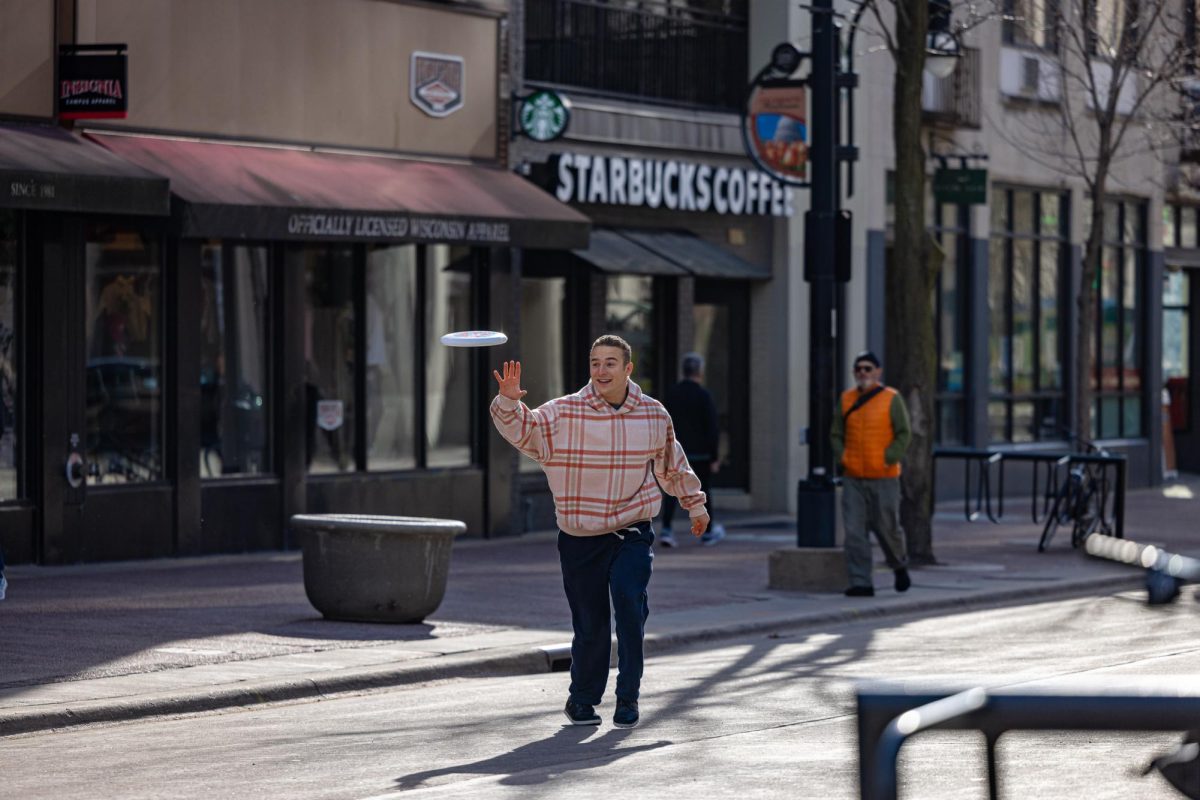The undergraduate experience comes with many built-in moments that form the basis for a common understanding of life as Badgers know it. Among these — confronting the perils of the University of Wisconsin all-you-can-eat dining hall buffets daily, doing your part to jump around so enthusiastically on game days that Camp Randall literally moves up and down, and, of course, spending time on Madison’s most famous strip of real-estate — State Street.
Since a major transition from a motorway to a pedestrian mall in the 1970’s, State Street continues to be an ever-changing landscape. Businesses come and go — seemingly at the drop of a hat. Political movements occasionally turn State Street into an avenue for demonstration, and the city ordinances governing State Street themselves regularly change. All the while, State Street remains a space for personal and artistic expression unlike any other in Madison.
Last spring, State Street’s half-a-century old status as a pedestrian mall entered a new, albeit brief, phase from May 8 to Oct. 30. This change, unofficially dubbed “FlockToState,” followed the removal of Metro Transit bus routes off the 400-600 blocks of State Street and a community conversation about turning state street into a pedestrian mall more like Pearl Street in Boulder, Colo. or Church Street in Burlington, Vt., according to the City of Madison Planning Division.
Major initiatives in the State Street experiment included street murals by local artists, 6-foot flamingo structures along the sides of the road, new benches and planters along the street and daily closures to all motor traffic, according to a report from the City of Madison. The experiment ended in October 2024. Since then, business as usual has largely returned, though faded street murals and bright flamingo statues remain as reminders of the experiment.

Today, the Bus Rapid Transit A route shuttles people across all eight blocks of State Street, delivery trucks routinely re-stock businesses and pedestrians generally keep to the sidewalks.
On March 26, the City of Madison Planning Division issued a report on the State Street experiment and announced that residents could expect a very limited version of the experiment to continue this summer. The Badger Herald spoke with City of Madison planner Dan McAuliffe and several members of the public to see how the experiment affected life on State Street and what to expect in the future.
In late 2023, the Madison city council passed a resolution directing staff to take on a one-year pedestrian mall experiment on State Street, and, now that that year has ended, the city needs time to examine the results of the experiment and see how to best implement future changes, McAuliffe said.
Many residents were happy with the experiment and wanted momentum for increasing pedestrian access to the street to continue into the future, but important questions about how to make a State Street mall work for everyone remain, according to McAuliffe.
“There are some realities that we are working through,” McAuliffe said. “I think where we landed for 25 is that we are going to try to do a couple things, but not necessarily in the same way. And we’re working through these [things].”
Difficulties with the State Street experiment included incidents between bikers and pedestrians, difficulty for some businesses — especially those without cold storage — in managing narrower delivery windows and damage to benches added as part of the experiment from vehicle strikes, according to McAuliffe.
Though the city does not intend to continue with major changes to State Street this summer — such as closing it to all motor traffic for lengthy portions of the day — it is considering organizing another community painting event and finding ways to incorporate more seating without getting in the way of delivery vehicles, McAuliffe said.
Amidst the changes of the last year, many continue to make the most of State Street — pedestrian mall or not.
Local musician David Hart has been playing the saxophone on State Street since 2019. Away at a college for much of the past few years, Hart has returned to the street every summer to busk and see how things have changed, Hart said.
He did not find that the State Street experiment significantly changed things for busking, but noted that it did change how police responded to noise complaints. As part of the experiment, the city designated a busking area on State Street near Frances Street Plaza to encourage street performances, which police brought up during an interaction with him.
“I was like, okay, at least I’ll try to make sure that I stay within the designated area or area with all the dots,” Hart said.
Street musicians who do not use public electricity are not required to be licensed or perform in assigned sites, according to the City of Madison.
The Badger Herald also spoke with freshman Adam Syverson, who was busking on State Street for the first time. Arriving from Chicago in the fall, Syverson was not in Madison for most of the experiment but said that though the street stenciling made State Street stand out, he rarely sees people use it as a pedestrian walkway, despite the minimal motor traffic on the street.
“The whole point is everyone’s supposed to walk around the center and stuff, but people mostly use the sidewalk, so I don’t know,” Syverson said. “Painting the street was interesting, but I don’t really know if that changed a lot.”

The painting event itself, however, was a huge success and drew over 600 volunteers, according to McAuliffe.
The Badger Herald also spoke with Madison residents Lucero Dunscombe and Zane Conway who frequently skateboard on State Street. Like Hart, Dunscombe and Conway did not find the experiment to have a major effect on their use of State Street, but said that they liked the experiment because it prohibited cars on the street later in the day and created new surfaces to practice on.
“I liked it,” Conway said. “I liked how there weren’t any cars later in the day, so then we could just skate flat ground and those ledges. They were pretty sick.”




